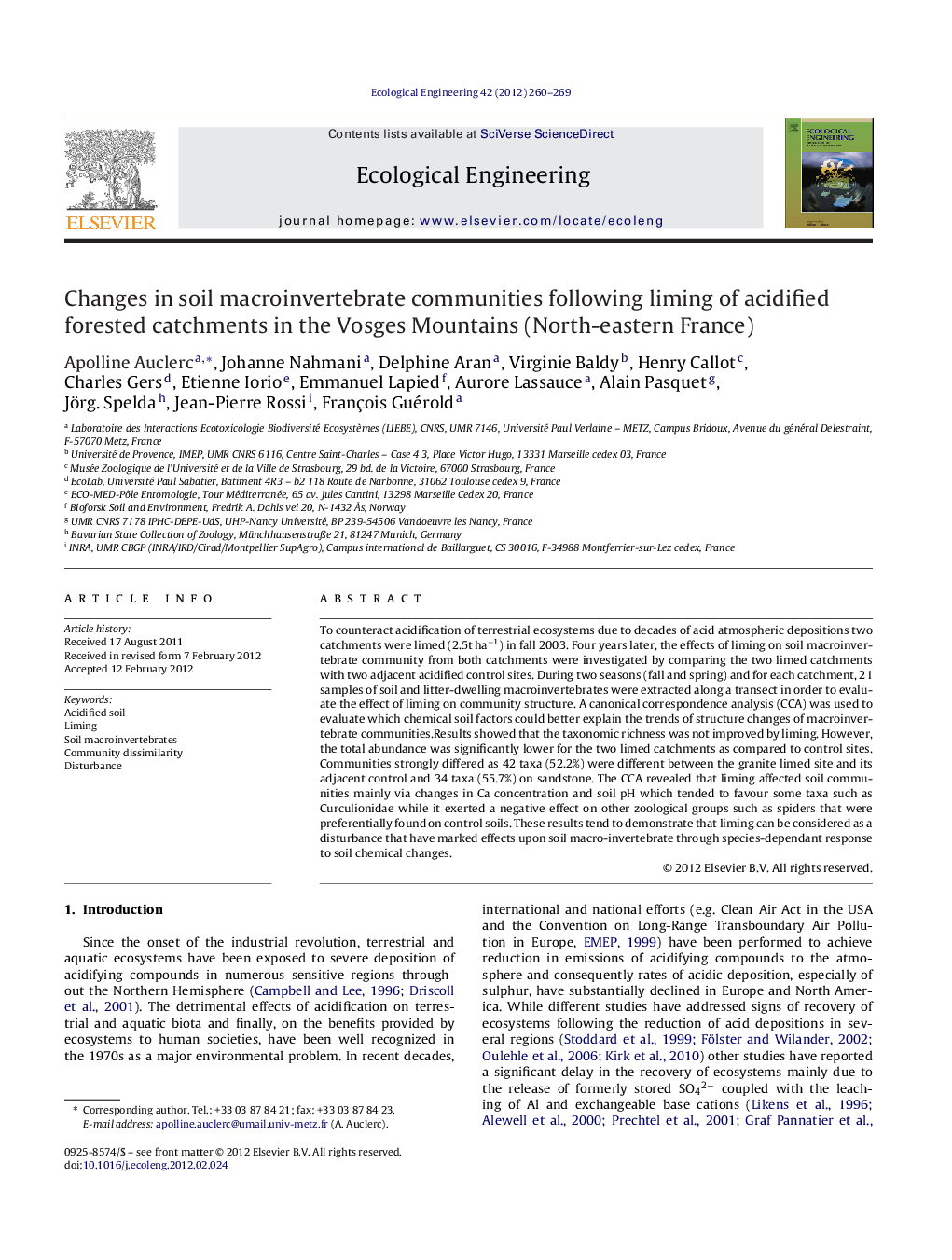| Article ID | Journal | Published Year | Pages | File Type |
|---|---|---|---|---|
| 6302803 | Ecological Engineering | 2012 | 10 Pages |
To counteract acidification of terrestrial ecosystems due to decades of acid atmospheric depositions two catchments were limed (2.5t haâ1) in fall 2003. Four years later, the effects of liming on soil macroinvertebrate community from both catchments were investigated by comparing the two limed catchments with two adjacent acidified control sites. During two seasons (fall and spring) and for each catchment, 21 samples of soil and litter-dwelling macroinvertebrates were extracted along a transect in order to evaluate the effect of liming on community structure. A canonical correspondence analysis (CCA) was used to evaluate which chemical soil factors could better explain the trends of structure changes of macroinvertebrate communities.Results showed that the taxonomic richness was not improved by liming. However, the total abundance was significantly lower for the two limed catchments as compared to control sites. Communities strongly differed as 42 taxa (52.2%) were different between the granite limed site and its adjacent control and 34 taxa (55.7%) on sandstone. The CCA revealed that liming affected soil communities mainly via changes in Ca concentration and soil pH which tended to favour some taxa such as Curculionidae while it exerted a negative effect on other zoological groups such as spiders that were preferentially found on control soils. These results tend to demonstrate that liming can be considered as a disturbance that have marked effects upon soil macro-invertebrate through species-dependant response to soil chemical changes.
